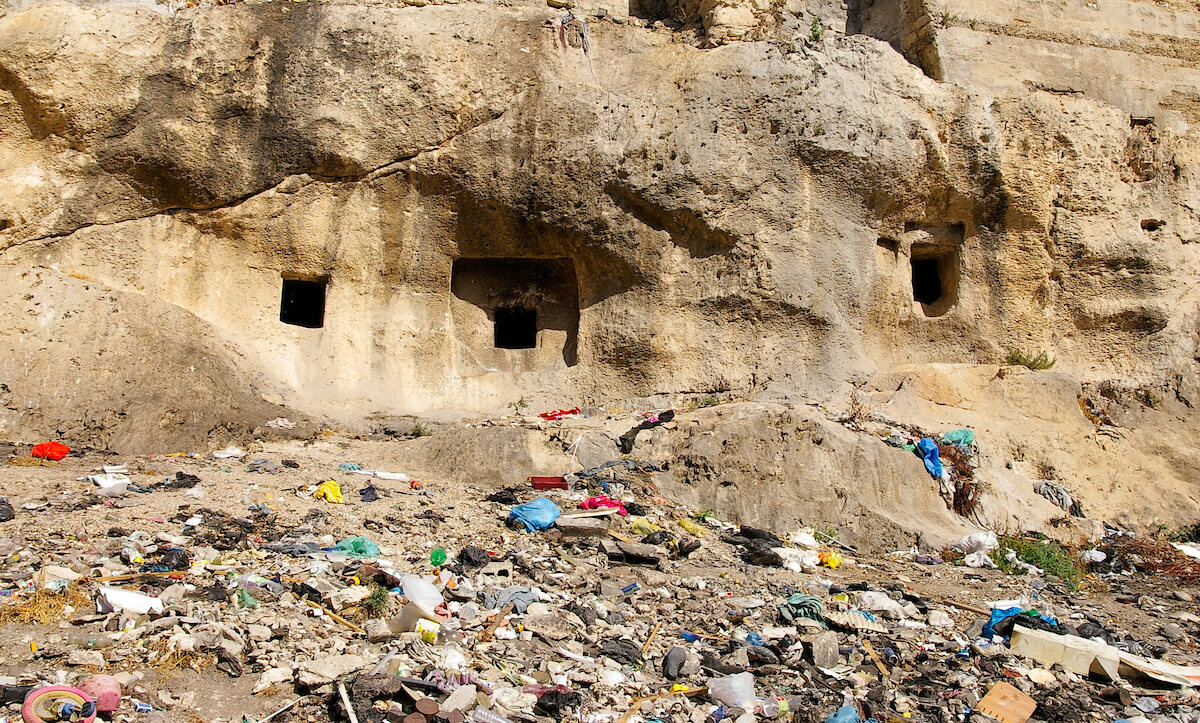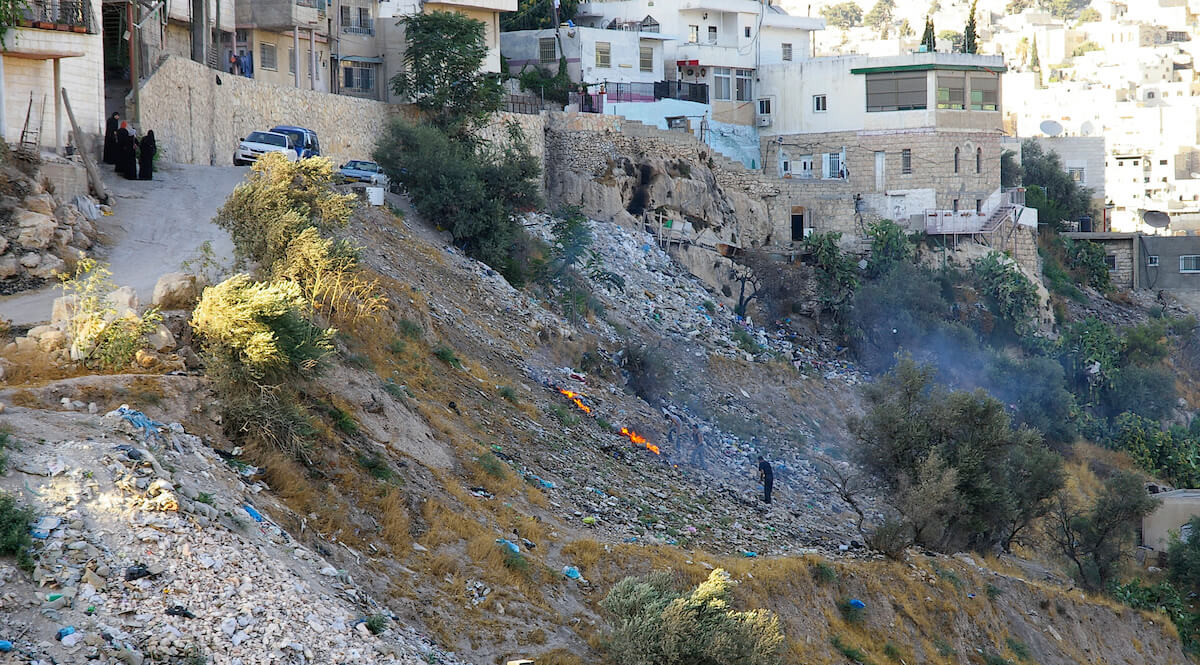Sometimes we confuse the holy for the common. Tourism proves it. What sites does your hometown or nearby big city offer tourists? Let me guess. Nobody comes to your city to see the local landfill.

(Photo: Silwan, Iron Age tombs with trash. Courtesy of the Pictorial Library of Bible Lands)
In San Antonio (where I grew up), the Alamo and Riverwalk still draw a crowd. In Dallas (near where I live now), Dealey Plaza ranks near the top. But the garbage dump never ranks high on “Things to See” (or smell) for any city.
Except perhaps Jerusalem.
Welcome to the Holy Landfill
My first trip to Israel had my head turning right and left nonstop. I’ve never recovered from seeing street signs and city names that match the words in my Bible. I just returned from Israel again—and it still amazes me.
But the one of the most surprising things—even still? Garbage in places I consider holy.
Oh, not everywhere, of course. Most neighborhoods take pride in keeping their streets, alleys, and valleys clean. But others, with amazing predictability, toss their trash out the window as if where they live makes no difference.

(Photo: Hinnom Valley trash burning. Courtesy of the Pictorial Library of Bible Lands)
The Temple Mount is a great example. To three religions the site represents—very literally—holy ground. From our perspective as Christians, the Temple Mount housed the presence of God for years in Solomon’s Temple, and the Second Temple saw the presence of Jesus Christ, God in the flesh.
Today, no Bibles are allowed on the Temple Mount, but you’ll see kids playing soccer and piles of trash that seem to stay untouched for years.
Just south of the Temple Mount, the village of Silwan offers one of the most embarrassing examples. At the base of Silwan in the Kidron Valley, the “King’s Garden” used to be Solomon’s crowning beauty. Today the area of the King’s Garden looks like a landfill —one of the most unattractive parts of the area of Jerusalem. In the valley, two Iron Age tombs had ancient Hebrew inscriptions on their façades. But these tombs today contain sewage and village garbage.
I see a huge lesson here for us (which goes beyond keeping our cities clean).
When the Holy Becomes Common
People never come to your city to visit its landfills. So, it seems strange that we’ll travel across the globe to a place where the locals dump their trash. How can some places be holy and at the same time, common?
For at least two reasons:
- Locals may not realize what treasures they have. To many locals, it’s just a place to live, but it ranks nothing special. You make a landfill in places of little importance.
- They may take holy places for granted. They know they live on the ground of biblical history, but it becomes so familiar that a ho-hum attitude kicks in.
This second reason brings it back home to us.
Separating the Ho-Hum from the Holy
Forget the Holy Land for a moment, and think of the holy things in your life.
What holy things can we take for granted? A few quick examples:
- Our marriages, children, and parents (Hebrews 13:4; Psalm 127-128)
- Sexual purity (1 Thessalonians 4:3-5)
- Personal devotion to God (2 Corinthians 11:3)
- God’s Word (Proverbs 30:5-6)
We would never dump garbage in any of these areas. That’s why we remind ourselves that these (and other) areas of our lives are holy ground. We never want to allow a ho-hum attitude to replace a holy devotion.
Some places in our cities remain special (that’s why tourist come). But we, the locals, rarely frequent them. Our lives have these same special places—holy places.
Never lose your sense of awe and appreciation for them.
Tell me what you think: What holy places in your life are the easiest to dump trash? To leave a comment, just click here.
